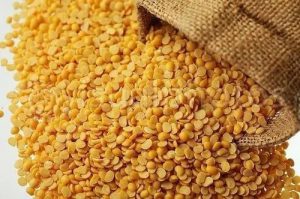Agriculture loans play a crucial role in supporting farmers, ranchers, and agricultural businesses in achieving their goals and sustaining their operations. However, choosing the right bank for an agriculture loan can be a daunting task, given the multitude of options available. This comprehensive guide aims to assist individuals and entities seeking agriculture financing by providing valuable insights into the factors to consider when selecting a banking partner. It will also explore major banks offering agriculture loans, compare interest rates and loan terms, evaluate specialized agriculture loan programs, outline the application process and eligibility criteria, and take into account customer reviews and satisfaction ratings. By the end of this guide, readers will be equipped with the necessary information to make informed decisions and choose the best bank for their agriculture loan needs.
Types of Agriculture Loans
When it comes to agriculture loans, one size does not fit all. Different farmers have different needs, and that’s why there are several types of agriculture loans available. Some common types include farm operating loans, equipment loans, livestock loans, and agricultural real estate loans. Farm operating loans provide funding for day-to-day expenses, while equipment loans help farmers acquire machinery, such as tractors or harvesters. Livestock loans assist in purchasing livestock, and agricultural real estate loans help finance land and property purchases for farming purposes.
Factors to Consider When Choosing a Bank for Agriculture Loans
Now that we understand the significance of agriculture loans let’s delve into the factors you should consider when selecting a bank or financial institution to obtain these loans from.
1. Reputation and Expertise in Agriculture Financing
When it comes to agriculture loans, you want to work with a bank that understands the unique challenges and opportunities of the agricultural industry. Look for a bank with a solid reputation and a track record of providing reliable financial services to farmers. Consider their expertise in agriculture financing, as this will ensure you receive tailored advice and support throughout the loan process.
2. Loan Requirements and Eligibility Criteria
Every bank has its own set of loan requirements and eligibility criteria. Before committing to a particular bank, carefully review their loan application process. Consider factors such as minimum credit scores, required collateral, and necessary documentation. Choosing a bank with reasonable eligibility criteria will increase your chances of securing an agriculture loan that matches your needs.
3. Interest Rates and Loan Terms
The interest rates and loan terms can significantly impact the overall cost and feasibility of an agriculture loan. Compare the interest rates offered by different banks and consider whether they are fixed or variable. Additionally, pay attention to the loan terms, including the repayment period and any penalties for early repayment. Opting for a bank that offers competitive interest rates and flexible loan terms can save you money in the long run.
4. Customer Service and Support
Agriculture loans can be complex, and having a supportive and responsive bank is essential. Consider the level of customer service offered by each bank, including their accessibility, responsiveness, and willingness to answer your queries. A bank with excellent customer support can provide valuable guidance and assistance throughout the loan process, making your experience smoother and less stressful.
Also Read:- Unveiling the 5 Most Profitable Trees to Cultivate in India
Conclusion
In conclusion, selecting the right bank for an agriculture loan is a critical decision that can significantly impact the success of farming operations and agricultural ventures. By considering factors such as reputation, loan terms, interest rates, specialized loan programs, and customer satisfaction, individuals and businesses can make informed choices. It is recommended to thoroughly research and compare different banks, assess their offerings based on specific needs and preferences, and leverage customer reviews and ratings to gauge their performance. By following this comprehensive guide, readers can confidently navigate the landscape of agriculture loans and find the best banking partner to support their agricultural aspirations.





